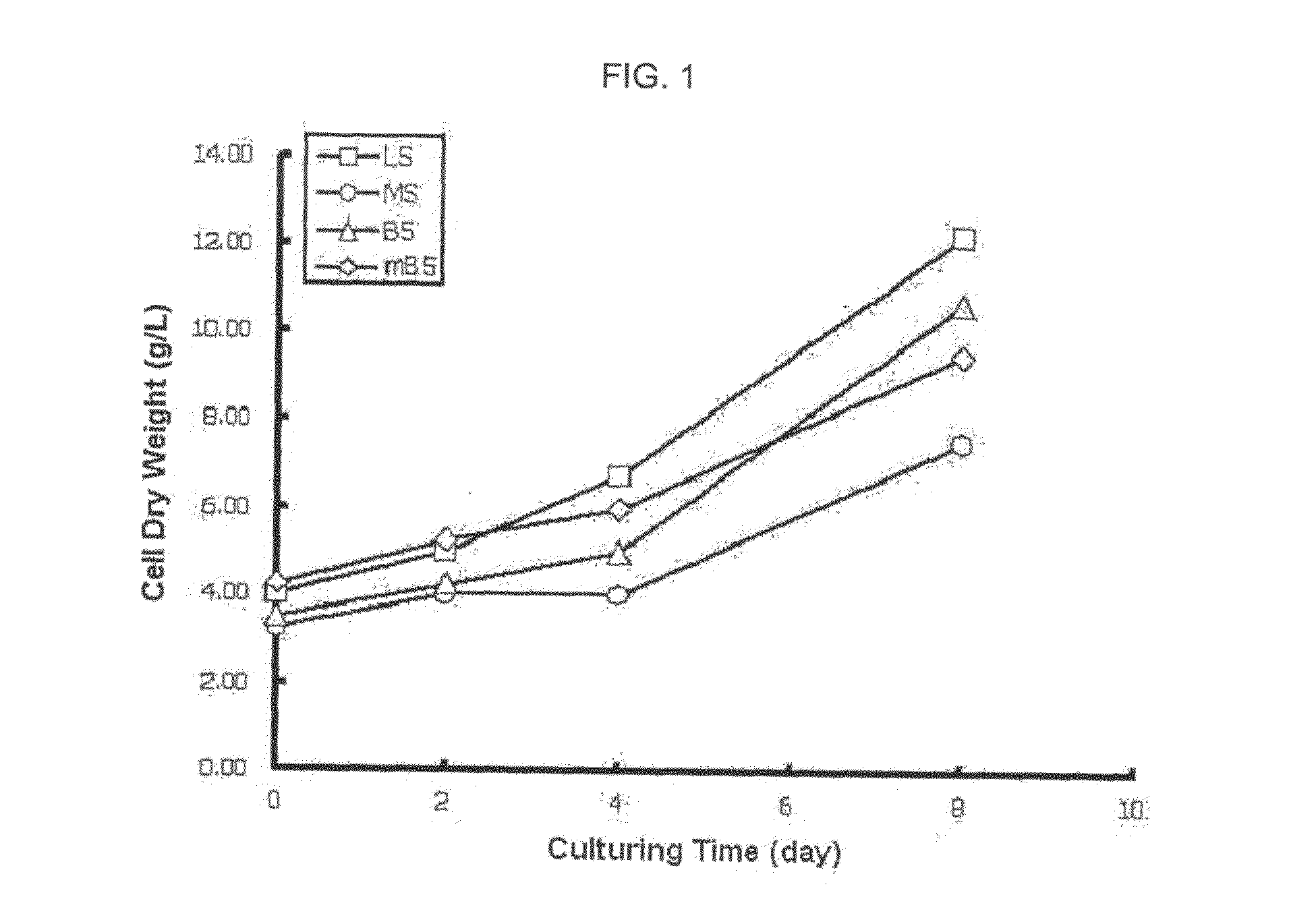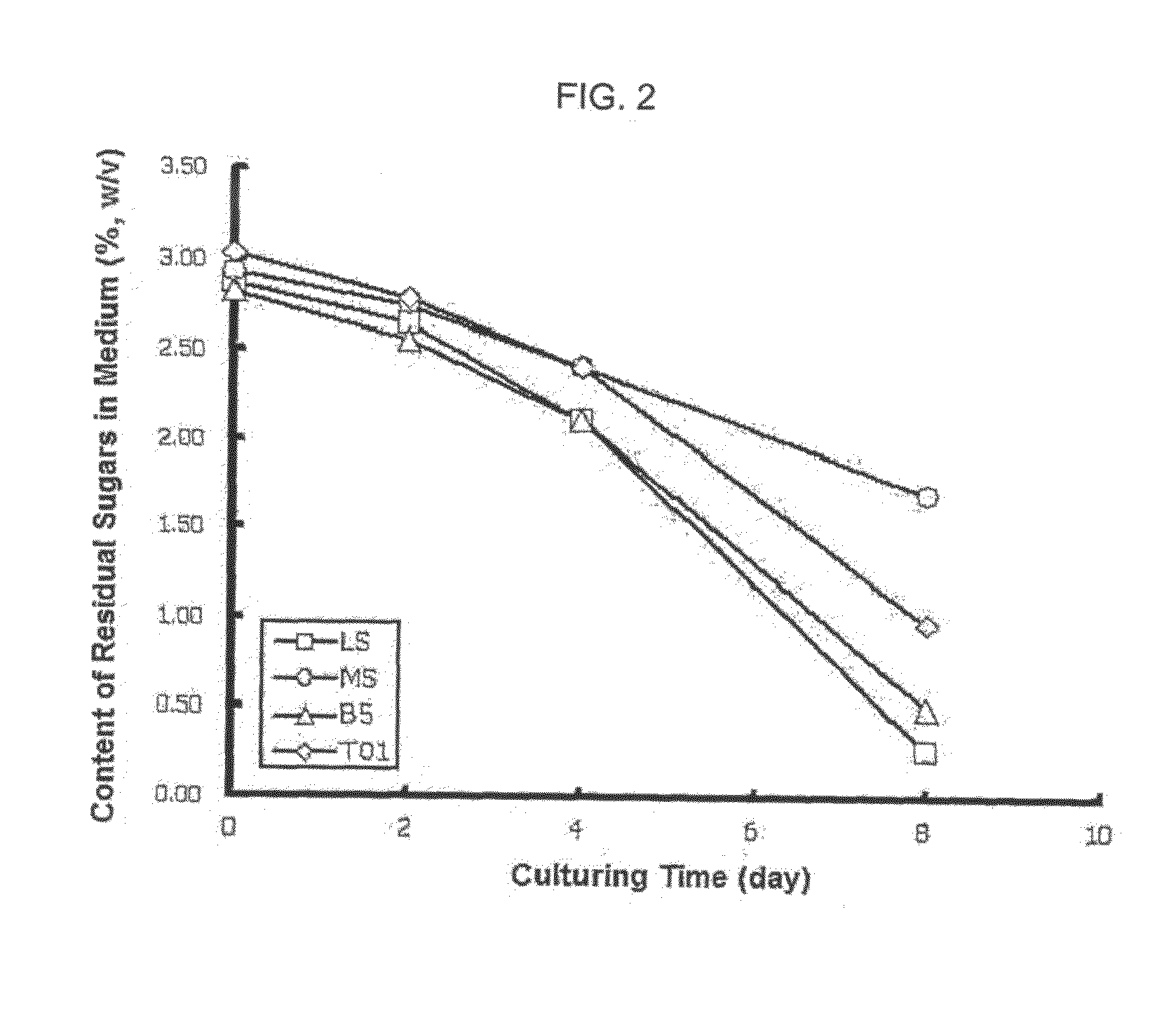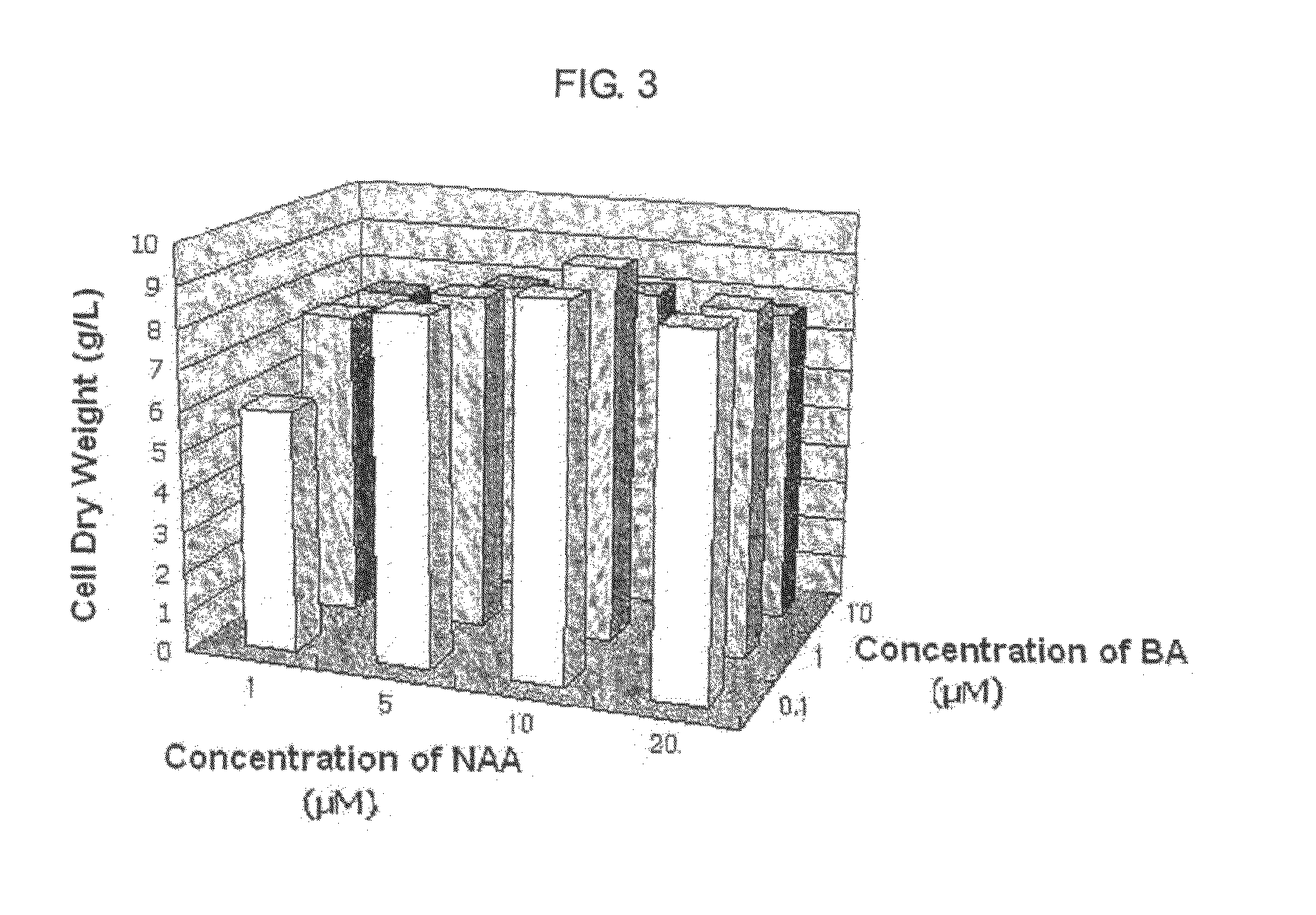Method for production of corosolic acid in suspension culture of plant cells
a corosolic acid and plant cell technology, applied in the field of corosolic acid production, can solve the problems of not meeting the increased demand for corosolic acid as raw materials of health foods and medicines, the method also has economic disadvantages, and the supply of corosolic acid through direct extraction from natural plants is significantly limited. , to achieve the effect of increasing the productivity of corosolic acid
- Summary
- Abstract
- Description
- Claims
- Application Information
AI Technical Summary
Benefits of technology
Problems solved by technology
Method used
Image
Examples
example 1
Establishment of Suspension Culture of Eriobotrya japonica and Selection of the Optimal Condition for Cell Growth
example 1-1
Callus Induction from Eriobotrya japonica
[0047]The leaves and stem were collected from Eriobotrya japonica grown outdoors or in the greenhouse, cut into about 5 cm, surface washed by dishwashing detergent, and rinsed with tap water.
[0048]The prepared sample was immersed in 95% ethanol solution for 1 minute, and then sterilized by continuously shaking it in 1% Sodium Hypochlorite solution for 30 minutes, and rinsed three times with sterilized distilled water.
[0049]The sterilized sample was cut with a scalpel into slices having 1 cm width×1 cm length, and inoculated on four kinds of medium (LS, MS, B5, and mB5) which were prepared by adding 30 g / L sucrose, 8 g / L agar, 10 μM NAA, 10 μM BA, 1 g / L casein hydrolysate, 1 g / L 2-Morpholinoethanesulfonic acid (MES), and adjusting the pH to 5.7, as indicated in Table 2, and then cultivated in the dark at a temperature of 24° C. for 8 weeks to induce the callus.
[0050]The induced callus was transferred to new medium at an interval of 4 weeks. T...
example 1-2
Suspension Culture of Eriobotrya japonica
[0052]The suspension culture was induced by using callus tissue obtained by culturing on the LS medium for 4 weeks according to the method of EXAMPLE 1-1.
[0053]Two grams of callus were finely chopped up with a scalpel and added to a 250 ml flask containing 50 ml of 4 kinds of liquid culture medium, and then was cultured by shaking at 110 rpm at 24° C. in the dark.
[0054]The suspension culture solution was sampled often and the amount of remaining sugar was measured with the refractometer. As a result, when the remaining sugar decreased to about 1% (w / v), it was transferred to a new passage culture medium.
[0055]During the first 2-3 passages cultures, 0.5-1% (w / v) of PVPP, XAD resin or 0.5% (w / v) activated carbon were added to the medium to prevent medium browning and cell oxidation, but were not added in subsequent passage cultures.
[0056]Among plant cell lines of Eriobotrya japonica obtained from suspension cultures, the plant cell lines with ...
PUM
| Property | Measurement | Unit |
|---|---|---|
| concentration | aaaaa | aaaaa |
| concentration | aaaaa | aaaaa |
| concentration | aaaaa | aaaaa |
Abstract
Description
Claims
Application Information
 Login to View More
Login to View More - R&D
- Intellectual Property
- Life Sciences
- Materials
- Tech Scout
- Unparalleled Data Quality
- Higher Quality Content
- 60% Fewer Hallucinations
Browse by: Latest US Patents, China's latest patents, Technical Efficacy Thesaurus, Application Domain, Technology Topic, Popular Technical Reports.
© 2025 PatSnap. All rights reserved.Legal|Privacy policy|Modern Slavery Act Transparency Statement|Sitemap|About US| Contact US: help@patsnap.com



